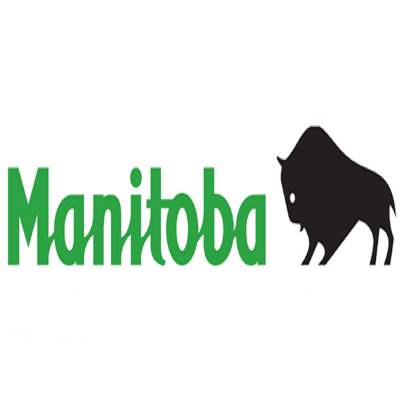2017
Type of resources
Topics
Keywords
Contact for the resource
Provided by
Years
Formats
Representation types
Update frequencies
status
Service types
-
Maanteiden huoitourakat vuonna 2017
-

Forest Management in Canada Web App: 2017 and 2020 (French)
-

Canada's Managed Forests 2017 (Albers)
-

Canadas Managed Forests 2017 Albers Equal Area Canada's Managed Forests 2017 Albers Equal Area
-

Since 1 March 2022, the Special Intervention Zones (ZIS) have been lifted. However, the territory flooded during the exceptional spring floods of 2017 and 2019, as illustrated in Annex 2 adjusted to Decree 814-2019, is considered by the Regulation concerning the provisional implementation of the amendments made by chapter 7 of the laws of 2021 on the management of risks related to floods (Transitional Regulation) as an area comparable to a low-current zone. The adjusted Annex 2 corresponds to the delimitation of the territory flooded during the spring floods of 2017 and 2019 in connection with the decree establishing the ZIS published on 15 July 2019, from which the portions of territory covered by the ministerial orders published on 30 December 2019 were subtracted.**This third party metadata element was translated using an automated translation tool (Amazon Translate).**
-

Tile layer of protected, managed forest code 20 used in the Story Map of Forest Management in Canada, 2017. Tile layer of protected, managed forest code 20 used in the Story Map of Forest Management in Canada, 2017. Protected areas were identified using the Canadian Council on Ecological Areas CARTS geodatabase. All IUCN Category Ia through VI protected areas in Canada were classified as Protected (CCEA 2008) with only a few exceptions. Data provided by Alberta Agriculture and Forestry; British Columbia Ministry of Forests; Manitoba Sustainable Development; Natural Resources Canada; New Brunswick Department of Energy and Resource Development; Newfoundland & Labrador Department of Fisheries and Land Resources; Northwest Territories Department of Environment and Natural Resources; Nova Scotia Department of Lands and Forestry; Ontario Ministry of Natural Resources and Forestry; Prince Edward Island Department of Communities, Land & Environment; Québec Ministère des Forêts, de la Faune et des Parcs; Saskatchewan Ministry of Environment; and Yukon Energy, Mines and Resources.
-

Tile layer of short-term tenure, managed forest code 12 used in the Story Map of Forest Management in Canada, 2017. Tile layer of short-term tenure, managed forest code 12 used in the Story Map of Forest Management in Canada, 2017. Short-Term Tenure areas are lands having shorter-term volume- or area-based tenure. Tenure arrangements can be overlapping. Lands with both long- and short-term tenures are classified as Long-Term Tenure (Code 11). Data provided by Alberta Agriculture and Forestry; British Columbia Ministry of Forests; Manitoba Sustainable Development; Natural Resources Canada; New Brunswick Department of Energy and Resource Development; Newfoundland & Labrador Department of Fisheries and Land Resources; Northwest Territories Department of Environment and Natural Resources; Nova Scotia Department of Lands and Forestry; Ontario Ministry of Natural Resources and Forestry; Prince Edward Island Department of Communities, Land & Environment; Québec Ministère des Forêts, de la Faune et des Parcs; Saskatchewan Ministry of Environment; and Yukon Energy, Mines and Resources.
-

Tile layer of forest management in Canada, 2017 version. This is the tiled layer dataset of forest management in Canada, 2017 version. It is used in the Story Map of Forest Management in Canada, 2017. All forest management classification codes are present in this dataset and include: Water (Managed Forest Code 100) Protected (Managed Forest Code 20) Treaty/Settlement (Managed Forest Code 40) Federal Reserve (Managed Forest Code 31) Indian Reserve (Managed Forest Code 32) Restricted (Managed Forest Code 33) Private (Managed Forest Code 50) Long-Term Tenure (Managed Forest Code 11) Short-Term Tenure (Managed Forest Code 12) Other (Managed Forest Code 13) Source: This tiled layer shows forest management in Canada areas, as of June 2017, and includes data provided by Alberta Agriculture and Forestry; British Columbia Ministry of Forests; Manitoba Sustainable Development; Natural Resources Canada; New Brunswick Department of Energy and Resource Development; Newfoundland & Labrador Department of Fisheries and Land Resources; Northwest Territories Department of Environment and Natural Resources; Nova Scotia Department of Lands and Forestry; Ontario Ministry of Natural Resources and Forestry; Prince Edward Island Department of Communities, Land & Environment; Québec Ministère des Forêts, de la Faune et des Parcs; Saskatchewan Ministry of Environment; and Yukon Energy, Mines and Resources.
-

Water map (managed forest code 100) used in the Story Map of Forest Management in Canada, 2017. Water map (managed forest code 100) created from Statistics Canada lakes and rivers polygon water file and used in the Map of Forest Management in Canada, 2017. Source: This web map shows the water used in the Story Map of Forest Management in Canada, 2017 and includes the following tiled layer:Water (Managed Forest Code 100)
-

Map of forest management in Canada, 2017 version. Forests cover large areas of Canada but only some of these forests are actively managed. The 2017 Map of Forest Management in Canada provides a generalized classification of forest management in Canada, including:protected areas Treaty/Settlement Lands (including Treaty Lands identified in final agreements, land claim agreements and settlements) Indian reserves other federal reserves (including military training areas) provincial and territorial reserves and restricted use areas private lands long-term tenure areas short-term tenure areas otherThe Map of Forest Management in Canada dataset provides a wall-to-wall classification of lands in Canada in 2017. It does not differentiate areas of forest from non-forest. The 2017 Map of Forest Management in Canada differs from maps defining the area designated as “managed forest” for greenhouse gas inventory reporting purposes and does not replace those maps. Instead, the Map of Forest Management in Canada shows areas that are currently managed, as of June 2017, and provides generalized management type classification for those areas. Collaborating agencies plan to update the dataset periodically as needed, and remain open to receiving advice from experts concerning refinement priorities for future versions. Source: This web map shows forest management in Canada areas, as of June 2017, and includes data provided by Alberta Agriculture and Forestry; British Columbia Ministry of Forests; Manitoba Sustainable Development; Natural Resources Canada; New Brunswick Department of Energy and Resource Development; Newfoundland & Labrador Department of Fisheries and Land Resources; Northwest Territories Department of Environment and Natural Resources; Nova Scotia Department of Lands and Forestry; Ontario Ministry of Natural Resources and Forestry; Prince Edward Island Department of Communities, Land & Environment; Québec Ministère des Forêts, de la Faune et des Parcs; Saskatchewan Ministry of Environment; and Yukon Energy, Mines and Resources.
 Arctic SDI catalogue
Arctic SDI catalogue